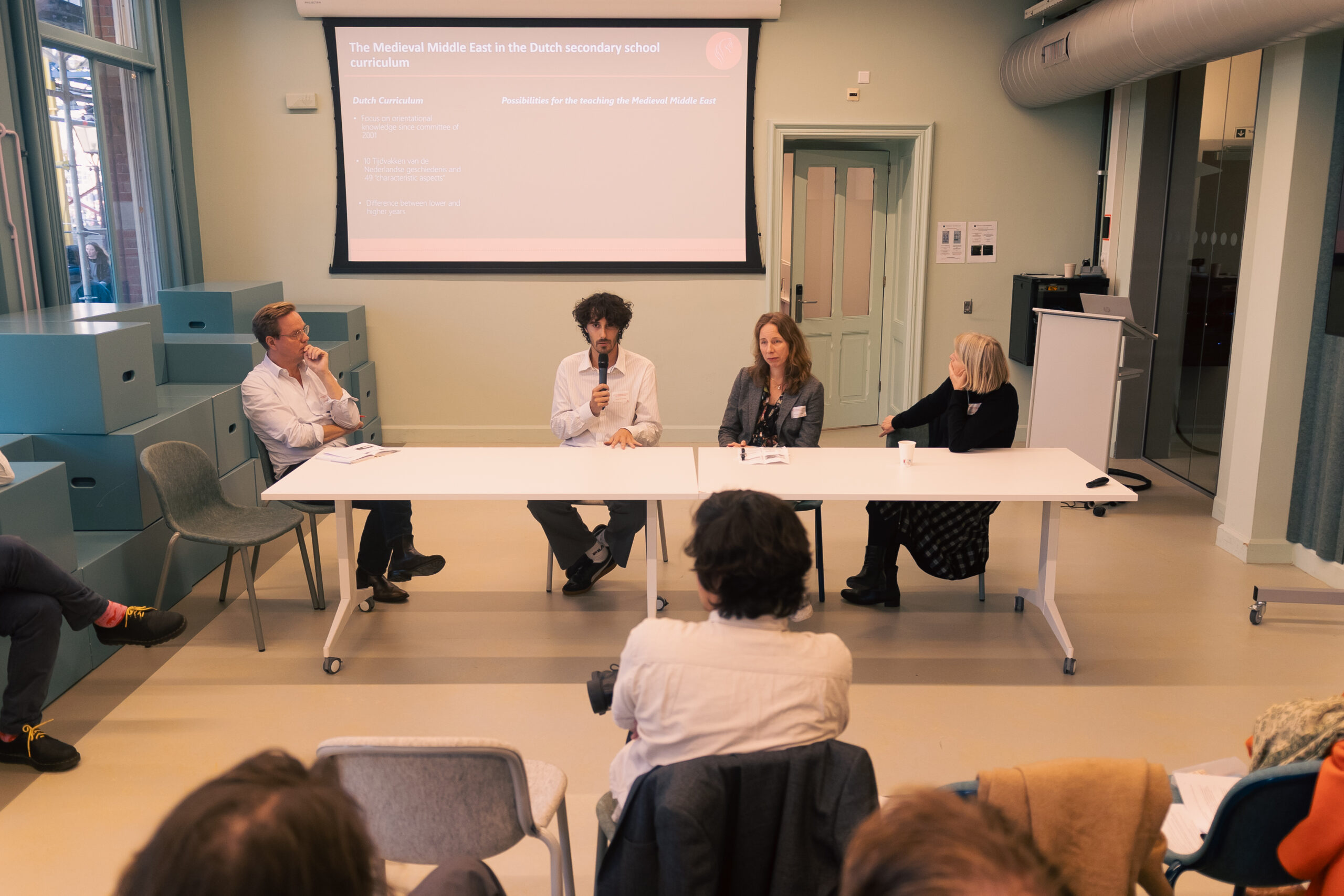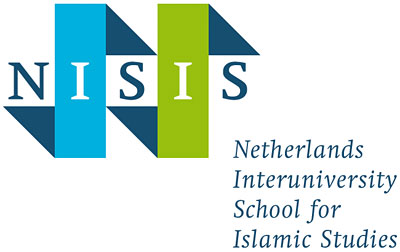Agenda
Second Annual Medieval Middle East Conference
 This October saw the second edition of the Annual Medieval Middle East Meeting, this time at the University of Amsterdam. Dutch universities are home to a quite large number of researchers and lecturers working on the premodern Islamicate world in all its respects. However, they are spread out over various departments, ranging from languages to religious studies, from history to art, and from archaeology to philosophy, and beyond. The aim of this initiative, which is organised by Ed Hayes (Leiden University) and Josephine van den Bent (UvA) is therefore to meet and share recent research, work in progress, and contemplations on our fields, in order to facilitate more scholarly connections and collaborations in general, cross-fertilization across disciplines and institutions in particular. MA students and PhD candidates in particular are encouraged to join and present their research, and receive feedback from more senior scholars. Besides NISIS, this year’s Meeting was made possible by support from the Dutch Research School for Medieval Studies and the research group “Kazan, Cairo, Cordoba”, part of the Amsterdam School of Historical Studies.
This October saw the second edition of the Annual Medieval Middle East Meeting, this time at the University of Amsterdam. Dutch universities are home to a quite large number of researchers and lecturers working on the premodern Islamicate world in all its respects. However, they are spread out over various departments, ranging from languages to religious studies, from history to art, and from archaeology to philosophy, and beyond. The aim of this initiative, which is organised by Ed Hayes (Leiden University) and Josephine van den Bent (UvA) is therefore to meet and share recent research, work in progress, and contemplations on our fields, in order to facilitate more scholarly connections and collaborations in general, cross-fertilization across disciplines and institutions in particular. MA students and PhD candidates in particular are encouraged to join and present their research, and receive feedback from more senior scholars. Besides NISIS, this year’s Meeting was made possible by support from the Dutch Research School for Medieval Studies and the research group “Kazan, Cairo, Cordoba”, part of the Amsterdam School of Historical Studies.
Like last year’s edition, the programme of the Meeting consisted of four panels, loosely thematically organised, in which contributors ranging from MA students to full professors present their ongoing or recently finished research. A fixture on the Meeting’s programme is also a roundtable on a topic of relevance to the field.
The first panel, chaired by Willem Flinterman (RUG/UvA) was themed “Women, kinship, palaces”. Angela Isoldi (Radboud University) was the first to present, on what the history of an endowed palace in Mamluk Cairo can tell us about the political and urban economy. Jelle Bruning (Leiden University) spoke about slavery and kinship in eighth- and ninth-century papyri. The last speaker of the first panel was Ewan Short (UvA), who discussed the leadership and visibility in the city of imperial women in eleventh-century Constantinople.
After a coffee break full of lively discussion, the Meeting continued with its second panel of the day. This panel, on religion and philosophy, was chaired by Mohamad El-Merheb (RUG). Its first contributor was Gijs Kruijtzer (independent), who presented on the increasing application of consequentialist thinking in the medieval Persianate world. He was followed by recent graduate (UvA) Andrea Centore, who dove into the Mediterranean alphanumeric discourse in the letter speculations of Abraham Abulafia and Aḥmad al-Būnī. The final presentation before the lunch break was by Srija Nandy (independent), on medieval and modern apocalyptic narratives.
The third panel, entitled “Administration and Law”, was chaired by Maaike van Berkel (Radboud University). Christopher Markiewicz (Ghent University) presented on waqf and the Bayt al-Mal in the Mamluk and Ottoman Sultanates of the fifteenth century. May Shaddel (UU) then spoke about the tax administration and military organisation in the Umayyad period. The fourth and final panel of the day, again about religion and philosophy, was chaired by Antonia Bosanquet (UU). Michael Leezenberg (UvA) discussed the idea of the holy man and, specifically, woman, in philosophy and wisdom traditions from Late Antiquity to the Muslim Middle Ages. Gerard Wiegers (UvA) was the final presenter, with a paper on The Tunisian captive Muhammad al-Qaysi as an eyewitness to the joint Castilian and Aragonese crusade against Nasrid Granada of 1309–1310.
Each year, the programme of the Annual Medieval Middle East Meeting includes a roundtable on a topic of relevance to the field. This year’s theme was “The Societal Impact of Studying and Teaching the Medieval Middle East”, and the roundtable was chaired by Khodadad Rezakhani (Leiden University). Besides participants from within the field, Gabrielle van den Berg and Birte Kristiansen (both Leiden University), the roundtable also included secondary school history teacher Julian Tiggeloven and Boudewijn Koopmans, impact developer humanities at IXA/UvA. Gabrielle presented on the exhibitions on Silk Road cities that she and her colleague Elena Paskaleva curated in Leiden. Birte talked the audience through the development of the Ted Ed animated videos on the origins of, and daily life in, the Islamic Empire that she created with Petra Sijpesteijn (Leiden University). She also presented the MOOC (Massive Open Online Course) “The Cosmopolitan Medieval Arabic World” the two of them created. Gabrielle and Birte already spoke about the challenges of knowing your audience and effectively creating impact, and this was also what Boudewijn and Julian addressed in their contributions. Boudewijn reflected on the meaning of impact in a broader sense, and specifically discussed the Impact Plan approach (NWO), which aims to purposefully increase the chance of social impact of research. Julian discussed the structure of the history curriculum in Dutch secondary schools, and gave suggestions and answered questions about how academic scholars on the medieval Middle East can impactfully contribute there.
Overall, the second edition of the Annual Medieval Middle East Meeting was a great day, which was celebrated with a reception in a nearby café. The organization would like to thank the UvA and specifically the Department of History, European Studies, and Religious Studies for hosting AMMEM this year. A special thank you goes out to Sophie Bouwmeester and Yvette Broex for their help in booking and organising things within the UvA, and to student assistants Merijn Collignon and David Batelaan, whose assistance was invaluable both during the day itself and in the run-up to the event. Finally, this Meeting would not have been possible without the support, both financial and otherwise, of the Research School for Medieval Studies, the Netherlands Interuniversity School for Islamic Studies, and the research group “Kazan, Cairo, Cordoba” within the Amsterdam School of Historical Studies. Finally, of course, the organization would like to thank all presenters, chairs, and contributors to the Roundtable for their invaluable contributions. The organization looks back on a stimulating and inspiring Meeting, and we look forward to the third edition in October 2025.
Photo: Merijn Collignon. The contributors to the Roundtable.

